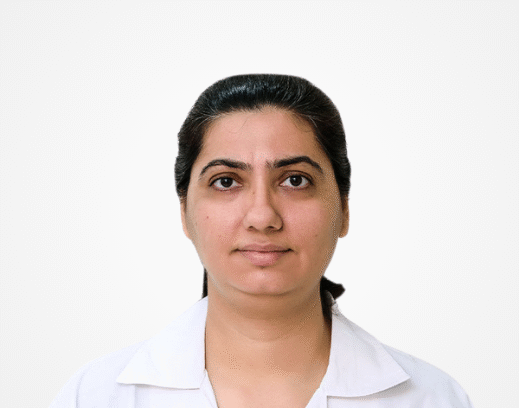Cost of Liver Transplant in India

What is Liver Transplant?
A liver transplant is a surgical procedure that involves replacing a diseased or failing liver with a healthy liver from a donor. The transplant is usually recommended for patients whose liver is no longer able to function properly due to severe liver diseases or conditions. The new liver can come from a living donor or a deceased donor.
The liver plays a crucial role in the body by:
Filtering toxins from the blood
Producing essential proteins and enzymes
Storing nutrients and vitamins
Producing bile, which is necessary for digestion
When the liver fails, it can result in life-threatening conditions like liver cirrhosis, liver cancer, or acute liver failure, making a transplant the only viable option to save the patient’s life.
Key Facts about Liver Transplant:
Living Donor Liver Transplant: Involves taking a portion of a healthy liver from a living donor. The liver can regenerate in both the donor and the recipient.
Deceased Donor Liver Transplant: The recipient receives a whole liver from a deceased donor. The donor liver must meet strict medical criteria for transplant suitability.
When is Liver Transplant Performed?
A liver transplant is typically recommended when a person’s liver is no longer able to perform its essential functions, and other treatments are no longer effective in managing the condition. The decision to undergo a liver transplant is based on various factors, including the underlying cause of liver disease, the severity of the liver damage, and the overall health of the patient.
✅ Common Conditions Requiring a Liver Transplant:
Liver Cirrhosis
Cirrhosis is the most common reason for liver transplant. It occurs when the liver becomes severely scarred due to long-term damage from diseases like chronic hepatitis B or hepatitis C, alcohol abuse, or fatty liver disease.
Cirrhosis leads to liver failure, where the liver can no longer process toxins, produce proteins, or regulate blood clotting.
Acute Liver Failure
Acute liver failure is a rapid decline in liver function, often due to viral infections (like hepatitis), drug overdoses (especially acetaminophen), or toxins.
This condition can be life-threatening and may require an immediate liver transplant to save the patient’s life.
Liver Cancer (Hepatocellular Carcinoma)
If liver cancer is diagnosed at an early stage and the cancer is confined to the liver, a transplant may be the best option.
A liver transplant in cancer cases can provide the patient with a chance of cure, as the removal of the liver eliminates the cancer and the diseased tissue.
Primary Biliary Cirrhosis
An autoimmune disease where the bile ducts in the liver become damaged, causing bile to build up and lead to liver damage.
This condition may progress to cirrhosis and liver failure, requiring a transplant.
Non-Alcoholic Steatohepatitis (NASH)
NASH is a type of fatty liver disease that can cause inflammation and scarring of the liver. In severe cases, it can lead to cirrhosis and liver failure, necessitating a transplant.
Chronic Hepatitis
Chronic hepatitis B or C can cause long-term liver damage, eventually leading to cirrhosis and liver failure. If the liver function declines significantly, a transplant may be needed.
Genetic Liver Diseases
Conditions such as Wilson’s disease (where copper accumulates in the liver), alpha-1 antitrypsin deficiency, and hemochromatosis can lead to liver failure and require a transplant when they are not responsive to treatment.
✅ Signs that a Liver Transplant May Be Needed:
Severe jaundice (yellowing of the skin and eyes)
Persistent fatigue and weakness
Swelling in the abdomen and legs (ascites and edema)
Uncontrolled bleeding or easy bruising
Cognitive impairment or confusion due to liver-related toxins (hepatic encephalopathy)
Liver-related complications despite treatment
The decision to proceed with a liver transplant is made after careful evaluation by a medical team specializing in liver diseases and transplants.
Causes of Liver Failure Leading to Transplant
Liver failure occurs when the liver is severely damaged and can no longer function properly. Various factors, including diseases, infections, toxins, and lifestyle choices, can lead to liver failure. The causes can be broadly categorized into chronic liver diseases, acute liver conditions, and genetic factors. Here are the major causes of liver failure that often necessitate a liver transplant:
A. Chronic Liver Diseases:
Chronic Hepatitis B and C
Chronic infection with hepatitis B or hepatitis C viruses can cause long-term liver inflammation, leading to scarring (cirrhosis) and eventual liver failure.
The ongoing damage from these infections can impair the liver’s ability to perform vital functions, making a transplant necessary when the liver reaches the end stage.
Non-Alcoholic Fatty Liver Disease (NAFLD)
This condition involves the accumulation of fat in the liver without alcohol consumption. When left untreated, it can progress to Non-Alcoholic Steatohepatitis (NASH), which causes liver inflammation and fibrosis.
In severe cases, NASH can lead to cirrhosis and liver failure, requiring a liver transplant.
Alcoholic Liver Disease
Long-term excessive alcohol consumption can cause alcoholic fatty liver, alcoholic hepatitis, and eventually cirrhosis.
As liver function declines due to alcohol-induced damage, a transplant may become the only option to save the patient’s life.
Cirrhosis
Cirrhosis is the result of scarring from chronic liver diseases such as hepatitis, fatty liver, or alcohol abuse. Over time, the liver becomes severely damaged and unable to function properly.
Cirrhosis can lead to life-threatening complications like portal hypertension, ascites, and liver cancer, often requiring a transplant.
B. Acute Liver Conditions:
Acute Hepatitis
Acute viral infections (hepatitis A, B, or C) or drug-induced liver damage (such as from acetaminophen overdose) can cause acute liver failure.
This condition often progresses rapidly, and in severe cases, a liver transplant may be necessary for survival.
Acute Liver Failure
Acute liver failure can occur suddenly, causing rapid deterioration of liver function. It may be triggered by factors such as viral infections, medications, toxins, or autoimmune disorders.
This condition is a medical emergency, and a liver transplant is often the only option for recovery.
C. Genetic and Metabolic Liver Diseases:
Wilson’s Disease
Wilson’s disease is a genetic disorder where copper accumulates in the liver, causing damage and potentially leading to liver failure if untreated.
In severe cases, a liver transplant may be required to manage the disease.
Hemochromatosis
This genetic disorder leads to excessive iron buildup in the liver, causing damage and cirrhosis. Over time, it can result in liver failure, necessitating a transplant.
Alpha-1 Antitrypsin Deficiency
This genetic condition leads to a deficiency in a protein that protects the liver. Over time, it can cause liver damage and cirrhosis, requiring a liver transplant in severe cases.
Biliary Atresia
Biliary atresia is a rare congenital condition in infants where the bile ducts are blocked or absent, leading to liver damage and cirrhosis. If untreated, it may require a liver transplant to prevent liver failure.
D. Other Causes:
Liver Cancer (Hepatocellular Carcinoma)
Liver cancer, especially when diagnosed at an advanced stage, may require a transplant if the liver is unable to function properly due to tumor growth.
If the cancer is confined to the liver and the patient meets transplant criteria, a liver transplant can provide a potential cure.
Autoimmune Hepatitis
Autoimmune hepatitis is a condition where the immune system attacks the liver, causing inflammation and damage. If untreated, it can progress to cirrhosis and liver failure, requiring a transplant.
Who is Eligible for a Liver Transplant in India?
Eligibility for a liver transplant depends on various factors, including the severity of the liver disease, overall health of the patient, and the likelihood of a successful transplant outcome. Not every patient with liver failure qualifies for a transplant. The decision is based on a thorough evaluation by a specialized transplant team. Below are the main criteria used to determine eligibility:
A. Medical Criteria for Liver Transplant Eligibility:
End-Stage Liver Disease
The patient must have a severe form of liver disease, often classified as end-stage liver disease (ESLD). This is generally diagnosed based on liver function tests, clinical symptoms, and imaging studies.
Patients with cirrhosis, advanced liver cancer, or acute liver failure who are not responsive to treatment are typically candidates for a transplant.
Model for End-Stage Liver Disease (MELD) Score
The MELD score is a widely used system to assess the severity of liver disease and predict the urgency of a liver transplant. The score is based on factors such as bilirubin (a liver enzyme), creatinine (a kidney marker), and INR (a blood clotting measurement).
A higher MELD score indicates more severe liver disease and greater need for a transplant.
Liver Cancer (Hepatocellular Carcinoma)
Liver cancer may be eligible for a transplant if the cancer is confined to the liver and has not spread beyond the organ.
There are specific Milan criteria for liver cancer, where a transplant may be offered if the cancer meets these criteria, such as a single tumor less than 5 cm in size or up to three tumors each less than 3 cm.
B. Other Factors Considered for Eligibility:
Overall Health and Age
The patient must be in reasonably good health apart from the liver condition. Age is not necessarily a barrier, but very elderly patients may have higher risks associated with transplant surgery.
Patients with serious underlying conditions such as heart disease, severe lung disease, or uncontrolled infections may not be considered suitable candidates.
Absence of Active Infections
Active infections such as HIV, tuberculosis, or severe bacterial infections can make a transplant more risky. Patients must be free from active infections before undergoing the procedure.
Psychological and Social Support
The patient must be mentally and emotionally stable to undergo the demanding process of a transplant. Additionally, strong social support from family or caregivers is essential for post-transplant recovery and lifelong medication adherence.
Substance Abuse
Patients who continue to abuse substances like alcohol or illicit drugs are generally not eligible for a liver transplant. However, some patients with alcohol-related liver disease may qualify if they can demonstrate sobriety for a significant period (typically 6 months or more).
Compliance with Medical Treatment
Patients must be able to follow post-transplant care instructions, including taking immunosuppressive medications to prevent organ rejection. Non-compliance can lead to transplant failure, so adherence to prescribed treatments is critical.
C. Eligibility for Living Donor Liver Transplant:
For living donor liver transplants, the donor must also meet certain health criteria to ensure a safe procedure for both the donor and the recipient. The donor must:
Be in good overall health with no major medical conditions (e.g., hypertension, diabetes, heart disease).
Have a liver that is large enough to be divided and transplanted into the recipient.
Be psychologically and emotionally fit to undergo surgery.
Types of Liver Transplants
Liver transplants are categorized based on the source of the liver and the method of transplantation. The main types of liver transplants include cadaveric transplants, living donor transplants, and split liver transplants. Each type has its own eligibility criteria, advantages, and considerations.
Source of Liver:
In this type of transplant, the liver is sourced from a deceased donor who has been declared brain-dead but whose organs are still viable for transplant.
The liver must be harvested soon after the donor’s death to ensure it remains healthy for transplantation.
Process:
Once a donor liver becomes available, it is matched with a patient based on several factors, including blood type, size, and urgency of the patient’s condition.
The liver is surgically removed from the donor and immediately transplanted into the recipient.
Advantages:
Cadaveric transplants are the most common type of liver transplant and can be a life-saving procedure for patients with end-stage liver disease.
They often provide better long-term outcomes since the liver from a healthy, young donor is often in optimal condition.
Considerations:
One of the main challenges with cadaveric transplants is the limited availability of suitable donor organs.
Waiting times for a cadaveric liver can be long, depending on the patient’s condition, blood type, and compatibility with available donors.
Source of Liver:
In a living donor liver transplant, a portion of the liver is surgically removed from a living donor and transplanted into the recipient.
The donor can be a family member or a close friend who is a good match for the patient. The donor liver regenerates to its normal size after the transplant.
Process:
The donor’s liver is divided into two parts: one part is transplanted into the recipient, while the other part remains in the donor’s body and regenerates over time.
This type of transplant is typically performed when the recipient’s liver is failing, but they are not in immediate danger of dying and are in need of a transplant within a reasonable timeframe.
Advantages:
Shorter waiting time: Since the liver is from a living donor, patients do not have to wait for a suitable deceased donor liver.
Better outcomes: Living donor liver transplants often have better survival rates since the liver is removed from a healthy donor and transplanted into the recipient while still healthy.
Considerations:
The living donor must undergo a thorough health evaluation to ensure they are suitable for donation.
There is also a risk for the donor, as any surgery carries inherent risks, but modern medical advances have made this process much safer.
Source of Liver:
In split liver transplantation, the liver from a deceased donor is divided into two parts: one part is transplanted into an adult recipient, and the other part is transplanted into a pediatric recipient.
This is typically used when a suitable donor liver is large enough to be split and used for more than one recipient.
Process:
The donor liver is divided into two sections, usually based on the size and condition of the liver. The smaller portion is typically used for the child or infant, while the larger portion is used for an adult recipient.
Advantages:
This type of transplant is an effective way to maximize the use of a donor liver, particularly when the donor is young and healthy.
It increases the chances of finding a suitable liver for both adults and children.
Considerations:
This type of transplant requires an exceptionally well-matched donor liver and a surgical team skilled in performing the split transplant procedure.
There may be complications associated with dividing the liver, but with proper care, the outcomes can be positive.
Source of Liver:
An auxiliary liver transplant involves the transplant of a partial liver from a donor, which is implanted alongside the recipient’s original liver.
This is a less common procedure and is usually performed for patients with reversible liver disease or as a bridge to a full transplant.
Process:
In this procedure, a small portion of the donor liver is transplanted and left in place with the recipient’s own liver. The goal is for the donor liver to help improve liver function while the recipient’s liver either regenerates or is treated.
Advantages:
This type of transplant may be performed on patients whose liver disease is reversible or who need temporary support before a full transplant.
Considerations:
The auxiliary transplant is not typically used for patients with end-stage liver failure or irreversible liver damage.
Why Choose India for Liver Transplant?
India has emerged as one of the leading destinations for liver transplants, offering world-class medical care at a fraction of the cost compared to Western countries. The combination of highly skilled surgeons, state-of-the-art medical infrastructure, and affordable treatment options makes India an attractive choice for liver transplant patients from around the world. Below are some of the key reasons why India is a top choice for liver transplants:
India boasts some of the best liver transplant surgeons globally, many of whom have received training and certifications from renowned international institutions.
Indian doctors have extensive experience performing liver transplants, with a high success rate due to their specialized skills and expertise in this complex procedure.
The country is home to several transplant centers that have earned international recognition for their excellence in liver transplant surgeries and post-operative care.
India has a number of hospitals equipped with cutting-edge technology, modern equipment, and advanced surgical techniques that are on par with international standards.
The country’s healthcare system offers access to highly advanced diagnostic and treatment facilities, ensuring that every patient receives the best possible care before, during, and after the transplant.
Many hospitals are accredited by international organizations such as the Joint Commission International (JCI), ensuring the highest standards of safety and quality in healthcare delivery.
One of the main reasons patients travel to India for a liver transplant is the affordability of medical treatment. The cost of a liver transplant in India is significantly lower compared to Western countries, such as the United States, the UK, or Canada.
On average, the cost of a liver transplant in India is 1/4th to 1/5th of the cost in countries like the US or the UK, without compromising on the quality of care. This makes India a cost-effective option for both patients and their families.
The lower treatment costs extend to the entire process, including pre-surgery consultations, tests, surgery, post-surgery care, and medication, making it highly affordable for international patients.
India has a high success rate in liver transplants, with many hospitals reporting excellent outcomes.
The combination of experienced surgeons, skilled medical staff, and world-class infrastructure contributes to the success of liver transplants in India, making it a safe and reliable option for patients worldwide.
Indian hospitals provide specialized services for international patients, including assistance with visa applications, travel arrangements, and post-transplant recovery support.
International patient care teams offer services such as language translators, dedicated care coordinators, and personalized treatment plans to ensure that patients from different countries feel comfortable and well taken care of during their medical journey.
Due to the availability of living donor liver transplants and the high volume of transplant surgeries performed in India, patients often face shorter waiting times compared to many other countries, where organ donor shortages are common.
This quick access to transplants is especially critical for patients who are in urgent need of a liver transplant and cannot afford to wait for months or even years.
India’s hospitals are known for their excellent post-transplant care. The recovery process is closely monitored by a team of experts who ensure that the patient is healing properly and that there are no complications.
Many hospitals have dedicated post-surgery rehabilitation programs and follow-up care, making sure the patient receives the necessary medications and support to ensure the longevity of the transplanted liver.
India has a well-established medical tourism infrastructure, with hospitals and healthcare providers focusing on offering services specifically tailored to international patients.
The country is known for its friendly and welcoming environment, making it easy for patients and their families to travel, undergo surgery, and recover comfortably.
Popular cities like Mumbai, New Delhi, Bangalore, Chennai, and Hyderabad are home to state-of-the-art hospitals and have world-class facilities for medical tourists.
Many Indian hospitals collaborate with international health insurance companies, offering hassle-free billing processes for patients with overseas health insurance coverage.
This partnership makes it easier for international patients to get financial support for their treatment in India, ensuring a smooth process from admission to discharge.
Pre-Transplant Evaluation & Tests
Before undergoing a liver transplant, patients need to go through a comprehensive evaluation process to ensure they are physically and mentally prepared for the procedure. The pre-transplant evaluation helps medical teams assess the patient’s overall health, the severity of liver failure, and the likelihood of a successful outcome. The evaluation includes several tests and assessments to ensure the liver transplant is the best course of action. Here’s an overview of the key steps involved in the pre-transplant evaluation:
Purpose: The first step in the evaluation process is a thorough review of the patient’s medical history, including any existing conditions, past surgeries, medications, and family history of liver disease.
Physical Exam: The patient will undergo a detailed physical examination to assess overall health and identify any complications that may affect the transplant procedure or recovery.
Liver Function Tests (LFTs): Blood tests are conducted to assess the functioning of the liver, measure liver enzymes, and evaluate the extent of liver damage. These tests help the doctors understand the severity of liver disease.
Blood Type and Compatibility: The patient’s blood type is determined to ensure compatibility with a potential donor liver. Blood tests also check for the presence of antibodies that could interfere with the transplant process.
Hepatitis Testing: Tests for hepatitis B and C are mandatory as these infections can affect the liver and may complicate a transplant.
Infection Screening: The patient will be tested for other infections (such as HIV) to ensure they are in optimal condition for surgery.
Ultrasound: An abdominal ultrasound will be performed to evaluate the condition of the liver, identify any complications such as cirrhosis or tumors, and assess the size and function of the liver.
CT Scan/MRI: These imaging tests provide more detailed information about the liver and surrounding organs. They help the doctors assess blood flow to the liver and the condition of the bile ducts.
Endoscopy: An endoscopy may be performed to check for any varices (enlarged veins) in the esophagus or stomach, which can occur in patients with cirrhosis. This is important to assess the risk of bleeding during surgery.
Heart Function Tests: As liver transplant surgery is a major procedure, doctors need to ensure that the patient’s heart is in good condition. This includes an electrocardiogram (ECG) and an echocardiogram to check for heart disease or other cardiac issues.
Stress Test: A stress test may be conducted to evaluate how the heart functions during physical activity, ensuring that it can handle the stress of surgery.
Lung Function Tests: Lung function is crucial for a successful liver transplant. A chest X-ray, pulmonary function tests (PFTs), and other breathing tests will be performed to assess the health of the lungs.
Sleep Study: If the patient is suspected of having sleep apnea or other breathing issues, a sleep study may be conducted to evaluate respiratory function during sleep.
Kidney Assessment: Since the liver and kidneys work closely together, the function of the kidneys will also be evaluated. Kidney function tests (such as creatinine levels and glomerular filtration rate) will be conducted to ensure that the kidneys are healthy and can manage post-transplant stress.
Mental Health Evaluation: Liver transplant recipients must have strong emotional and psychological resilience to handle the challenges of surgery and recovery. A psychologist or psychiatrist may conduct an evaluation to assess mental health and screen for conditions such as depression or anxiety.
Social Support Evaluation: The patient’s family and caregivers will also be assessed to ensure they can provide emotional and practical support during the recovery phase. This is critical for long-term success after the transplant.
Biopsy: In some cases, a liver biopsy may be required to confirm the diagnosis of liver disease or assess the severity of liver damage.
Genetic Testing: If the liver disease is suspected to be hereditary (e.g., genetic disorders such as hemochromatosis), genetic testing may be done to understand the cause and assess any risks for the donor or recipient.
Liver Transplant Procedure Overview
Liver transplantation is a major surgical procedure that involves replacing a diseased liver with a healthy liver from a donor. The process is carefully planned and executed by a team of specialists including transplant surgeons, hepatologists, anesthetists, and support staff. Here’s a step-by-step overview of how the procedure typically unfolds:
Hospital Admission: Once a donor liver becomes available and is matched with the recipient, the patient is admitted to the hospital immediately.
Final Evaluation: Last-minute blood work, imaging, and health checks are conducted to confirm the patient’s readiness for surgery.
Consent and Counseling: The patient and family are briefed about the procedure, and necessary legal and medical consent forms are signed.
General Anesthesia: The patient is placed under general anesthesia to ensure they are unconscious and pain-free during the procedure.
Incision: A large incision is made in the upper abdomen to access the liver. The surgical team carefully exposes the liver and surrounding structures.
Detachment: The surgeon disconnects the liver from the blood vessels (hepatic artery, portal vein) and bile ducts.
Liver Removal: The damaged or failing liver is completely removed while preserving the necessary structures for the new liver to be attached.
Placement: The healthy donor liver is positioned in place of the old liver.
Connection of Blood Vessels: Surgeons connect the donor liver to the patient’s major blood vessels to restore circulation.
Bile Duct Connection: The bile duct from the donor liver is connected to the patient’s bile duct or intestine to ensure proper bile flow.
Monitoring Blood Flow: Surgeons carefully check the blood flow through the liver to ensure it is functioning correctly.
Control of Bleeding: Any bleeding points are addressed, and surgical drains may be placed to collect fluid from the site.
Wound Closure: The incision is carefully closed in layers using surgical sutures or staples.
Bandaging: A sterile dressing is applied over the surgical site to protect it from infection.
ICU Monitoring: The patient is moved to the intensive care unit (ICU) for close monitoring of vital signs, liver function, and recovery from anesthesia.
Initial Medications: Immunosuppressants are started immediately to prevent the body from rejecting the new liver.
Post-Transplant Care & Recovery
Recovering from a liver transplant is a critical phase that involves close medical supervision, lifestyle adjustments, and lifelong commitment to health maintenance. The primary goal during recovery is to help the new liver function optimally while preventing complications like organ rejection and infection.
ICU Monitoring (First Few Days): After surgery, patients are moved to the intensive care unit (ICU) where vital signs, liver function, and organ response are closely monitored.
Transition to Ward (After Stabilization): Once stable, the patient is shifted to a regular transplant ward for further recovery.
Average Hospital Stay: Typically lasts between 2 to 3 weeks, depending on the patient’s progress.
Immunosuppressants: These are essential to prevent the body’s immune system from attacking the new liver. They must be taken exactly as prescribed for life.
Antibiotics & Antivirals: Given to prevent infections, especially in the early recovery phase.
Regular Monitoring of Drug Levels: Doctors may adjust doses based on blood test results to avoid side effects.
Surgical Site Maintenance: The incision site must be kept clean and dry to prevent infections.
Drain Removal: Surgical drains are removed once the fluid output decreases to safe levels.
Frequent Check-ups: Initially, follow-ups may be weekly or biweekly, later reduced as the patient stabilizes.
Routine Blood Tests: To monitor liver function, medication levels, and overall health.
Balanced Diet: A high-protein, low-fat diet supports healing and liver health.
Hydration: Drinking plenty of fluids is essential, unless restricted by your doctor.
Avoid Alcohol & Smoking: Completely abstain from alcohol and tobacco to protect the new liver.
Limit Salt Intake: To reduce fluid retention and high blood pressure risk.
Gradual Mobilization: Walking is encouraged within a few days after surgery.
Avoid Heavy Lifting: For at least 6-8 weeks post-surgery or as advised.
Long-Term Fitness: Light exercises like walking or yoga can be resumed gradually with medical approval.
Counseling: Helps patients adjust emotionally to life post-transplant.
Support Groups: Connecting with other transplant recipients can offer valuable guidance and comfort.
Recovering from a liver transplant is a journey that requires discipline, strong support systems, and consistent medical care. With proper follow-up and a healthy lifestyle, most patients lead a full and active life.
Risks and Possible Complications
While liver transplantation can be life-saving, it is a major surgery and carries certain risks. Being aware of potential complications helps patients and caregivers monitor and manage recovery more effectively. These risks can be classified into short-term (early) and long-term (late) complications.
1. Organ Rejection
Acute Rejection: The body may recognize the new liver as a foreign object and attempt to attack it. This usually occurs within the first few weeks or months.
Chronic Rejection: A slower, long-term process that can occur over years if immunosuppressants are not properly managed.
Signs of Rejection: Include fever, fatigue, jaundice (yellowing of skin/eyes), and abnormal liver test results.
Management: Rejection is often managed successfully with medication adjustments.
2. Infections
Due to Immunosuppressants: These medications weaken the immune system, making the body more vulnerable to infections, especially in the early recovery period.
Types: Respiratory infections, urinary tract infections, and opportunistic infections like CMV (Cytomegalovirus).
Prevention: Includes good hygiene, avoiding sick contacts, and taking prescribed prophylactic antibiotics or antivirals.
3. Surgical Complications
Bleeding: Can occur during or shortly after surgery and may require additional procedures.
Bile Duct Problems: Leaks or strictures (narrowing) may develop, sometimes requiring endoscopic or surgical correction.
Blood Clots: In the hepatic artery or portal vein, which may compromise the new liver’s function.
4. Medication Side Effects
Immunosuppressant Effects: Can cause high blood pressure, diabetes, kidney dysfunction, increased cholesterol, and bone thinning over time.
Monitoring: Regular blood tests help manage and minimize side effects.
5. Cancer Risk
Long-term use of immunosuppressants may slightly increase the risk of certain cancers like lymphoma and skin cancer.
Prevention: Regular screenings and limiting sun exposure can help mitigate this risk.
6. Recurrence of Original Liver Disease
In some cases, the underlying liver disease may return in the new liver, especially with conditions like hepatitis B/C or autoimmune diseases.
Close follow-up is essential to detect and manage any recurrence early.
7. Psychological and Emotional Challenges
Some patients may experience depression, anxiety, or post-surgical stress, especially during the initial months.
Support: Psychological counseling and transplant support groups can help with emotional well-being.
While these risks exist, liver transplant centers in India and globally have developed robust protocols to detect, prevent, and manage most complications effectively. With close medical supervision and a proactive approach, patients can enjoy a long and healthy life after transplant.
Success Rate and Life After Transplant
Liver transplantation has become a highly successful and routinely performed surgery, offering a second chance at life for patients with end-stage liver disease or acute liver failure. The success of the procedure and quality of life afterward largely depend on timely surgery, proper post-operative care, and patient compliance with medical guidance.
High Success Rates: India has emerged as a global hub for liver transplants, with success rates ranging from 85% to 95% for one-year survival, and 75% to 85% for five-year survival.
Factors Influencing Success:
Patient’s overall health before surgery
Experience of the surgical and transplant team
Hospital infrastructure and post-operative care
Strict adherence to medications and lifestyle changes
Improved Energy and Function: Most patients experience dramatic improvements in appetite, energy levels, and daily functioning within weeks.
Return to Work and Normal Activities: Many individuals are able to return to work, travel, and lead a near-normal life within 3 to 6 months of surgery.
Diet and Nutrition: Maintaining a healthy diet and avoiding alcohol is crucial for long-term liver health.
Physical Activity: With clearance from the doctor, patients can engage in regular physical activities and even light sports.
Regular Follow-Ups: Lifelong monitoring through blood tests and imaging ensures early detection of any potential issues such as rejection or organ dysfunction.
Medication Compliance: Taking immunosuppressive medication on time and in the correct dose is essential to prevent rejection and complications.
Patients often report a better outlook on life, reduced anxiety, and improved social interaction.
Counseling and support groups can help patients deal with post-transplant emotional adjustments.
A successful liver transplant not only extends life but significantly enhances its quality. With the right care and commitment, patients can enjoy many healthy, productive years ahead.
Cost of Liver Transplant in India
India is renowned for offering world-class liver transplant services at a fraction of the cost compared to many Western countries, without compromising on quality or safety. This cost advantage, along with highly experienced medical teams and cutting-edge technology, makes India a top destination for liver transplants.
Average Cost Range
The average cost of a liver transplant in India typically ranges between ₹18,00,000 to ₹28,00,000 INR (approximately $21,000 to $34,000 USD).
The cost may vary depending on:
Type of transplant (living donor or deceased donor)
Choice of hospital and city
Complexity of the patient’s medical condition
Length of hospital stay and post-surgery care needs
What the Cost Usually Includes
Pre-transplant evaluation and diagnostic tests
Transplant surgery for both recipient and living donor (if applicable)
ICU and hospital stay
Surgeon, anesthetist, and medical team fees
Immunosuppressive medication (initial period)
Follow-up care during hospital stay
Additional Expenses (Not Always Included)
Travel and accommodation for international patients or accompanying family
Long-term immunosuppressive medication (monthly cost varies)
Management of complications (if any)
Donor evaluation and recovery (in case of living donor transplant)
Comparison with Other Countries
United States: $5,00,000 – $8,00,000
UK or Europe: $2,50,000 – $3,00,000
India: $21,000 – $34,000
✔ This significant cost difference, combined with India’s advanced medical infrastructure and internationally accredited hospitals, makes it an ideal choice for medical tourists seeking affordable, high-quality liver transplant treatment.
Best Doctors for Liver Transplant in India
Best Hospitals for Liver Transplant in India
Med Travel India Offerings
How does Med Travel India help you?
Services offered by Med Travel India

Seamless Planning for Your Medical Journey
Before you even arrive, we take care of all the groundwork. From connecting you with top specialists to ensuring all necessary medical evaluations are completed, we make your journey stress-free. Our goal is to provide clarity and comfort before your treatment begins.
- Free Medical Consultation
- Personalized Treatment Plan
- Estimated Cost & Duration
- Visa Assistanc
- Second Opinion Service
- Pre-Arrival Coordination
Worry-Free Travel & Comfortable Stay
We ensure that your journey to India is as smooth as possible. From booking your flights to arranging a comfortable stay near your hospital, we handle everything so you can focus on your health.
- Flight Booking Assistance
- Accommodation Booking
- Airport Pickup & Drop
- Language Interpretation Services
- Local Transport Arrangements
- Currency Exchange Support


World-Class Medical Care, Personalized for You
We ensure that your medical treatment is well-organized and efficient. Our team works closely with hospitals to facilitate smooth admissions, consultations, and procedures, ensuring you receive top-quality healthcare.
- Priority Appointment Scheduling
- Direct Hospital Admission
- Specialist Doctor Assignment
- Pharmacy & Medical Supplies
- Hospital Admission & Discharge Support
- 24/7 Customer Assistance
Continued Support for a Speedy Recovery
Your health journey doesn’t end after treatment. We provide post-procedure assistance to ensure a smooth recovery, whether you stay in India for rehabilitation or return home.
- Post-Surgical Care Coordination
- Rehabilitation & Physiotherapy
- Virtual Doctor Consultations
- Diet & Lifestyle Guidance
- Extended Stay Arrangements
- Post-treatment Medical Supplies


Beyond Healthcare, A Comfortable Experience
We offer additional services to make your stay in India comfortable and enriching, ensuring that your well-being is cared for beyond the hospital.
- Medical Insurance Settlement Help
- SIm Card Assistance
- Customized Sightseeing Tours
- Medical Document Assistance
- Personalized Assistance for Family Members
- Concierge Services







































